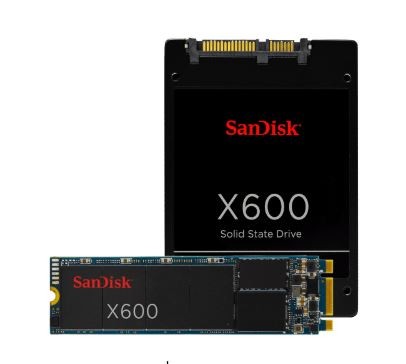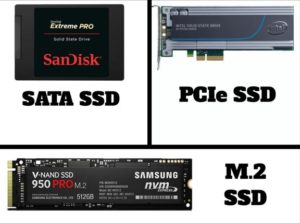



The connection type is the single most important factor:
SATA is the acronym for Serial Advanced Technology Attachment is the old connector that has been in popular use from the early 2000’s to today.
PCIe is the acronym for Peripheral Control Interconnect Express is the (typically white) expansion slots on a PC. Laptops use mini-PCIe connectors which are just physically smaller connectors that do the same thing.
So M.2 does not visually tell you very much. M.2 can connect to PCIe or SATA but SATA connectors can only connect to a SATA controller.
Today, nearly all new new PC’s and laptops use PCIe SSD drives with an M.2 connector.
To make this more confusing there are different lengths and “keys” (slots or cuts) in M.2 SSD’s. Like the very large USB standards, the computer industry has now coalesced around just a small subset of M.2 options. Today nearly all PCIe SSD’s are “M” or “M+B” keyed 2240’s (22mm wide 80 mm long) and 2280’s (see image at the bottom right of this article).
SATA connectors are relatively large and bulky but most importantly their data is routed through a SATA contoller that is limited to 6MB/s where as PCIe connectors are tiny and connect to a PCH (Peripheral/Platform Control Hub) which theoretically runs 25 time faster than SATA but practically connects SSD’s at about 1GB/s .
Add controller and firmware functionality into the mix and the average tech can easily get lost. To make it much easier to understand Dell came up with a grading system called “Class” The higher the number, the faster the disk:
| CLASS | Marketing Name | Primary Market | Connector | Sequential Read/Write | Random Read/Write |
| 10 | Value | Retail Consumer | SATA | 520mb/320mb | 30mb/10mb |
| 20 | Mainstream | Consumer Corporate | SATA | 500mb/300mb | 80mb/75mb |
| 30 | Performance | Corporate | SATA | 550mb/350mb | 90mb/75mb |
| 35 | Performance | Pro-Consumer Corporate | PCIe M.2 | 800mb/1200mb | ?/? |
| 40 | Performance | Pro-Consumer Corporate | PCIe M.2 | 1500mb/350mb | 200mb/80mb |
| 50 | Performance | Corporate | PCIe Card | 2100mb/1200mb | 300mb/100mb |
Hopefully the rest of the industry picks up this standard.
In the near future Class 10 and 20 SATA based SSD’s will disappear and we will be left with M.2 and PCIe Card connected storage drives for all but old retrofit / upgrades.
If you have an old computer, it likely will not have an M.2 port but will definitely have a SATA port. If you have a PC or laptop manufactured after 2018 it very likely has an M.2 port. However, you really need to check BEFORE you buy.
This website uses cookies.